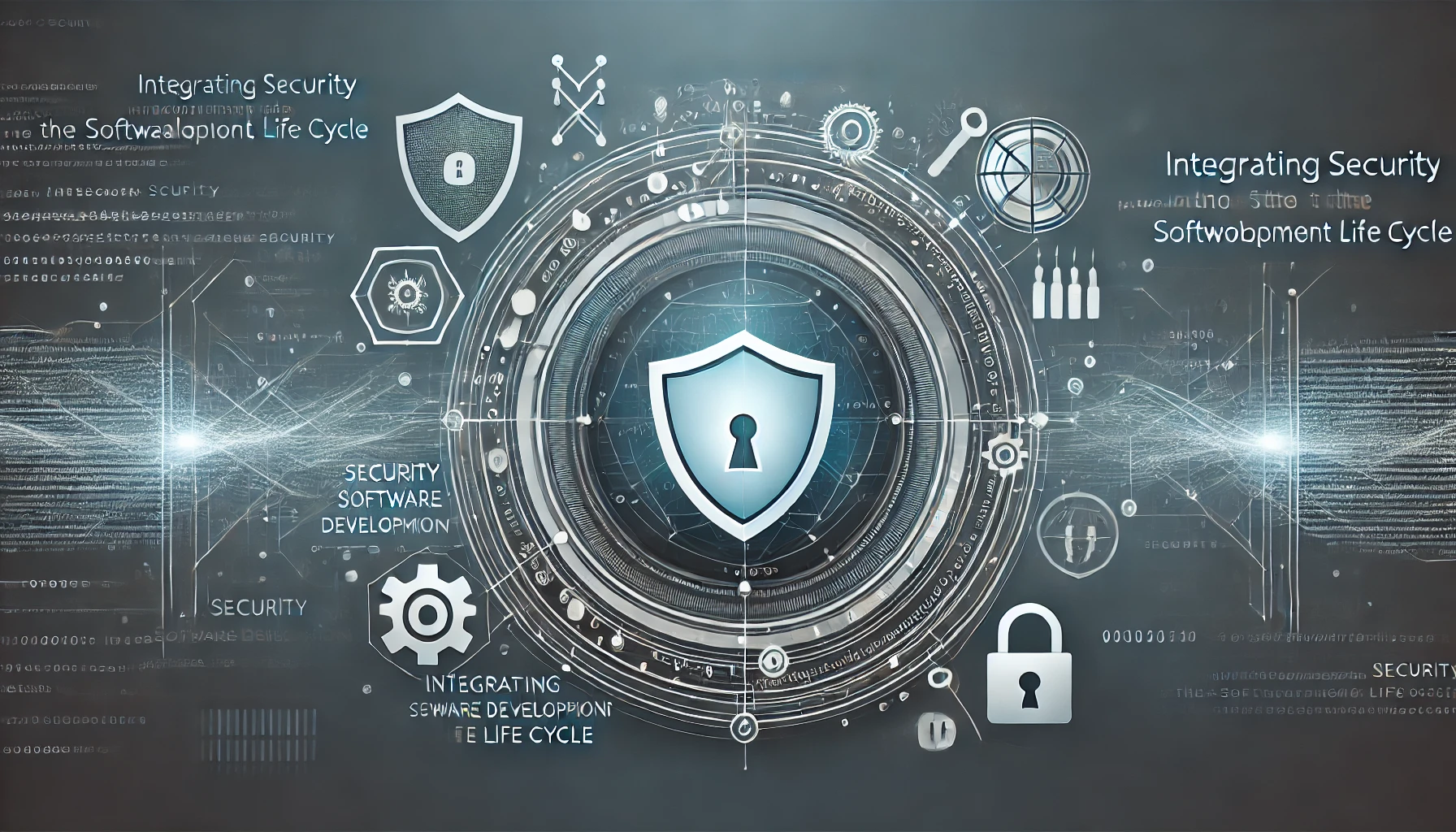
As a cybersecurity expert with years of hands-on experience in Security Operations Centers (SOCs), I’ve witnessed the critical role that specialized tools play in defending against ever-evolving cyber threats. The right combination of tools not only enhances the efficiency of a SOC but also significantly improves an organization’s overall security posture. This comprehensive guide delves deep into the most popular SOC tools, providing detailed insights into their functionalities, use cases, deployment considerations, and how they integrate into the modern cybersecurity framework.
1. Introduction to SOC Tools
1.1 Understanding the Role of SOC
A Security Operations Center (SOC) is a centralized unit that deals with security issues on an organizational and technical level. The SOC team is responsible for:
- Monitoring: Continuously observing network and system activities for signs of security incidents.
- Detection: Identifying potential security threats and anomalies.
- Response: Coordinating responses to mitigate and contain security incidents.
- Prevention: Implementing measures to prevent future incidents.
1.2 Importance of SOC Tools in Cybersecurity
SOC tools are essential for:
- Enhancing Visibility: Providing comprehensive insights into the security posture.
- Automating Tasks: Reducing manual efforts through automation.
- Improving Response Times: Facilitating rapid detection and remediation.
- Compliance: Assisting in meeting regulatory requirements.
2. Security Information and Event Management (SIEM) Tools
2.1 Overview of SIEM
SIEM solutions collect and analyze security data from various sources to provide real-time analysis of security alerts. They combine:
- Log Management: Aggregating logs from across the network.
- Event Correlation: Identifying relationships between events.
- Alerting: Notifying security personnel of potential issues.
2.2 Top SIEM Tools
2.2.1 Splunk Enterprise Security
- Overview: A powerful SIEM platform known for its scalability and advanced analytics.
- Features:
- Real-time monitoring and alerting.
- Anomaly detection using machine learning.
- Extensive app ecosystem for integrations.
- Use Cases:
- Large enterprises needing scalable solutions.
- Organizations requiring customizable dashboards.
2.2.2 IBM QRadar
- Overview: Integrates security information and event management with user behavior analytics.
- Features:
- Automated log collection and normalization.
- Advanced threat intelligence integration.
- AI-driven insights with IBM Watson.
- Use Cases:
- Enterprises looking for integrated AI capabilities.
- Environments with complex compliance requirements.
2.2.3 LogRhythm NextGen SIEM
- Overview: Focuses on rapid threat detection and response.
- Features:
- Embedded security orchestration and automation.
- Comprehensive log management.
- User and entity behavior analytics (UEBA).
- Use Cases:
- Mid to large organizations seeking integrated SOAR capabilities.
- Teams aiming to reduce mean time to detect (MTTD) and respond (MTTR).
2.2.4 ArcSight ESM
- Overview: Provides real-time correlation and analysis of security events.
- Features:
- Scalable architecture for large data volumes.
- Comprehensive compliance reporting.
- Integration with ArcSight Marketplace tools.
- Use Cases:
- Organizations handling massive event data.
- Industries with stringent compliance standards.
3. Security Orchestration, Automation, and Response (SOAR) Tools
3.1 Understanding SOAR
SOAR platforms enable organizations to collect security threats data and automate responses to low-level security events without human assistance. They help in:
- Automating Routine Tasks: Reducing manual workload.
- Orchestrating Workflows: Integrating various tools and processes.
- Enhancing Incident Response: Streamlining the response process.
3.2 Leading SOAR Solutions
3.2.1 Palo Alto Networks Cortex XSOAR
- Overview: Combines security orchestration, incident management, and interactive investigation.
- Features:
- Playbook automation for incident response.
- Threat intel management.
- Collaboration tools for SOC teams.
- Use Cases:
- Enterprises needing extensive automation.
- SOCs aiming to unify disparate tools.
3.2.2 Splunk Phantom
- Overview: Offers automation and orchestration for security operations.
- Features:
- Visual playbook editor.
- Real-time collaboration and case management.
- Over 200 integrations with security tools.
- Use Cases:
- Organizations seeking to augment Splunk SIEM.
- Teams wanting code-free automation.
3.2.3 IBM Resilient
- Overview: Focuses on incident response orchestration.
- Features:
- Dynamic playbooks that adapt to incidents.
- Integration with IBM QRadar and other SIEMs.
- GDPR and privacy regulation modules.
- Use Cases:
- Companies needing regulatory compliance support.
- SOCs requiring adaptive response capabilities.
4. Endpoint Detection and Response (EDR) Tools
4.1 The Evolution of EDR
EDR tools focus on detecting and investigating suspicious activities on endpoints (computers, mobile devices, servers). They provide:
- Continuous Monitoring: Tracking endpoint behaviors in real-time.
- Threat Detection: Identifying known and unknown threats.
- Response Capabilities: Containing and remediating threats.
4.2 Prominent EDR Platforms
4.2.1 CrowdStrike Falcon
- Overview: A cloud-native platform offering EDR and next-gen antivirus.
- Features:
- AI-powered threat detection.
- Managed threat hunting with Falcon OverWatch.
- Lightweight agent with minimal performance impact.
- Use Cases:
- Organizations seeking a scalable cloud solution.
- Teams needing proactive threat hunting.
4.2.2 Carbon Black Endpoint Standard
- Overview: Provides predictive security by analyzing endpoint data.
- Features:
- Streaming prevention for real-time threat blocking.
- Comprehensive visibility into endpoint activities.
- Behavioral analytics to detect sophisticated attacks.
- Use Cases:
- Enterprises wanting detailed endpoint insights.
- SOCs focused on advanced threat detection.
4.2.3 Microsoft Defender for Endpoint
- Overview: An integrated EDR solution for Windows environments.
- Features:
- Built-in protection for Windows OS.
- Integration with Microsoft 365 security suite.
- Automated investigation and remediation.
- Use Cases:
- Organizations heavily invested in Microsoft ecosystems.
- Teams looking for seamless integration with existing tools.
5. Network Traffic Analysis (NTA) Tools
5.1 Importance of NTA in SOC
NTA tools monitor network traffic to detect malicious activities that may not be caught by traditional security measures. They help in:
- Identifying Anomalies: Spotting unusual patterns or behaviors.
- Detecting Lateral Movement: Recognizing internal threats moving within the network.
- Enhancing Visibility: Providing insights into network communications.
5.2 Top NTA Tools
5.2.1 Darktrace
- Overview: Uses AI to detect and respond to cyber threats across digital environments.
- Features:
- Self-learning AI for anomaly detection.
- Autonomous response capabilities.
- Visualization tools for threat analysis.
- Use Cases:
- Organizations needing advanced AI-driven detection.
- Environments with complex network architectures.
5.2.2 Vectra AI Cognito
- Overview: Focuses on detecting and responding to hidden cyber attackers.
- Features:
- AI-driven detection of threats in real-time.
- Coverage for cloud, data center, and enterprise networks.
- Threat hunting and investigation tools.
- Use Cases:
- Enterprises requiring comprehensive network visibility.
- SOCs aiming to detect advanced persistent threats (APTs).
5.2.3 Cisco Stealthwatch
- Overview: Provides enterprise-wide visibility and security analytics.
- Features:
- Behavioral modeling for anomaly detection.
- Encrypted traffic analysis without decryption.
- Integration with Cisco’s security ecosystem.
- Use Cases:
- Organizations using Cisco networking equipment.
- Teams needing encrypted traffic insights.
6. Threat Intelligence Platforms (TIP)
6.1 Role of Threat Intelligence
Threat Intelligence involves collecting and analyzing information about current or potential attacks that threaten an organization. TIPs help in:
- Aggregating Data: Collecting threat data from multiple sources.
- Analyzing Threats: Identifying relevance to the organization’s context.
- Sharing Intelligence: Collaborating with industry peers and communities.
6.2 Leading TIP Solutions
6.2.1 Anomali ThreatStream
- Overview: Aggregates threat data and integrates it into security controls.
- Features:
- Centralized threat intelligence management.
- Automated threat detection and response.
- Integration with SIEM and other security tools.
- Use Cases:
- SOCs needing a unified threat intelligence feed.
- Organizations aiming to operationalize threat data.
6.2.2 Recorded Future
- Overview: Offers real-time threat intelligence powered by machine learning.
- Features:
- Broad coverage from open, technical, and dark web sources.
- Contextualized threat analysis.
- Integration with security infrastructure.
- Use Cases:
- Teams requiring comprehensive threat visibility.
- Organizations looking to enhance predictive security measures.
6.2.3 MISP (Malware Information Sharing Platform)
- Overview: An open-source platform for sharing threat intelligence.
- Features:
- Community-driven threat sharing.
- Customizable data models and sharing groups.
- Automation through APIs.
- Use Cases:
- Organizations wanting to collaborate on threat intelligence.
- SOCs with limited budgets seeking open-source solutions.
7. Vulnerability Management Tools
7.1 Significance in SOC Operations
Vulnerability Management is the process of identifying, evaluating, treating, and reporting on security vulnerabilities. It’s crucial for:
- Proactive Security: Addressing weaknesses before exploitation.
- Regulatory Compliance: Meeting standards that require regular scanning.
- Risk Reduction: Prioritizing remediation efforts based on risk.
7.2 Popular Vulnerability Scanners
7.2.1 Tenable Nessus
- Overview: A widely used vulnerability scanner known for its comprehensive coverage.
- Features:
- Detection of a wide range of vulnerabilities.
- Configuration and compliance auditing.
- Customizable reporting.
- Use Cases:
- Organizations needing thorough scanning capabilities.
- Teams requiring detailed vulnerability insights.
7.2.2 Qualys Vulnerability Management
- Overview: Cloud-based service offering continuous vulnerability assessment.
- Features:
- Scalable scanning for large environments.
- Integration with patch management tools.
- Real-time visibility and dashboards.
- Use Cases:
- Enterprises seeking cloud-based solutions.
- SOCs needing seamless integration with other security tools.
7.2.3 Rapid7 InsightVM
- Overview: Provides live vulnerability and endpoint analytics.
- Features:
- RealRisk score for vulnerability prioritization.
- Integration with Metasploit for validation.
- Dynamic asset discovery.
- Use Cases:
- Teams focusing on risk-based remediation.
- Organizations wanting integrated validation of vulnerabilities.
8. Security Analytics and User Behavior Analytics (UBA)
8.1 Understanding Security Analytics
Security Analytics involves using data collection, aggregation, and analysis tools for security monitoring and threat detection. UBA focuses on:
- Monitoring User Activities: Identifying deviations from normal behavior.
- Detecting Insider Threats: Spotting malicious activities from within.
- Enhancing Anomaly Detection: Using machine learning for pattern recognition.
8.2 Top UBA Tools
8.2.1 Exabeam Advanced Analytics
- Overview: Leverages machine learning for behavioral analytics.
- Features:
- Automated baselining of normal user behavior.
- Timeline creation for incident investigation.
- Integration with existing SIEMs.
- Use Cases:
- SOCs needing enhanced insider threat detection.
- Teams aiming to reduce investigation times.
8.2.2 Securonix UEBA
- Overview: Provides advanced analytics for detecting sophisticated threats.
- Features:
- Behavior modeling and peer group analysis.
- Threat chain detection using kill chain methodology.
- Cloud-native architecture.
- Use Cases:
- Organizations seeking scalable, cloud-based analytics.
- SOCs focusing on advanced persistent threats.
8.2.3 Splunk User Behavior Analytics
- Overview: Integrates with Splunk Enterprise for behavioral analytics.
- Features:
- Predefined use cases for rapid deployment.
- Machine learning algorithms for anomaly detection.
- Visual analytics for threat hunting.
- Use Cases:
- Teams using Splunk SIEM wanting to enhance capabilities.
- Organizations requiring quick implementation.
9. Incident Response and Management Tools
9.1 The Need for Incident Management
Effective Incident Response (IR) is critical for minimizing the impact of security incidents. IR tools help in:
- Coordinating Responses: Streamlining communication and actions.
- Documenting Incidents: Keeping records for analysis and compliance.
- Improving Processes: Learning from incidents to enhance future responses.
9.2 Leading Incident Response Platforms
9.2.1 ServiceNow Security Operations
- Overview: Integrates security response with IT workflows.
- Features:
- Incident prioritization based on business impact.
- Automated workflows and remediation tasks.
- Integration with various security tools.
- Use Cases:
- Enterprises needing alignment between IT and security teams.
- Organizations focusing on process optimization.
9.2.2 Swimlane
- Overview: A SOAR platform emphasizing incident response automation.
- Features:
- Drag-and-drop playbook creation.
- Case management and reporting.
- Integration with a wide range of security products.
- Use Cases:
- SOCs aiming to reduce manual workloads.
- Teams needing customizable automation.
9.2.3 Demisto (now Cortex XSOAR)
- Overview: Provides comprehensive incident management and response.
- Features:
- Collaborative investigation war rooms.
- Machine learning for playbook recommendations.
- Extensive integration ecosystem.
- Use Cases:
- Teams requiring collaborative tools.
- SOCs looking to leverage machine learning in IR.
10. Security Automation Tools
10.1 Automation in Modern SOCs
Automation is key to handling the vast amount of data and alerts in modern SOCs. Benefits include:
- Efficiency: Accelerating routine tasks.
- Consistency: Ensuring standardized responses.
- Scalability: Managing increasing workloads without proportional resource increases.
10.2 Prominent Automation Solutions
10.2.1 Ansible
- Overview: An open-source automation tool for configuration management and deployment.
- Features:
- Agentless architecture.
- Playbooks written in YAML.
- Extensive module library.
- Use Cases:
- Automating deployment of security policies.
- Orchestrating updates and patches.
10.2.2 Puppet
- Overview: Provides automation for infrastructure management.
- Features:
- Declarative language for configuration.
- Role-based access control.
- Reporting and visualization tools.
- Use Cases:
- Managing large-scale infrastructure changes.
- Enforcing compliance through automation.
10.2.3 Chef
- Overview: Automates application deployment, configuration management, and more.
- Features:
- Recipes and cookbooks for configurations.
- Test-driven development for infrastructure.
- Integration with cloud providers.
- Use Cases:
- Organizations adopting DevSecOps practices.
- Teams needing infrastructure as code (IaC) capabilities.
11. Integration and Collaboration Tools
11.1 Importance of Collaboration in SOC
Effective communication and collaboration are essential for:
- Incident Response: Coordinating efforts across teams.
- Knowledge Sharing: Disseminating threat intelligence.
- Process Improvement: Continuous enhancement of security posture.
11.2 Top Tools
11.2.1 Slack
- Overview: A collaboration platform offering real-time messaging.
- Features:
- Channels for organized communication.
- Integration with security tools for alerts.
- File sharing and archiving.
- Use Cases:
- SOC teams needing real-time coordination.
- Organizations wanting to centralize communications.
11.2.2 Microsoft Teams
- Overview: A unified communication platform with chat, meetings, and integrations.
- Features:
- Seamless integration with Microsoft 365.
- Video conferencing capabilities.
- Customizable tabs and bots.
- Use Cases:
- Enterprises using Microsoft services.
- Teams requiring robust collaboration features.
11.2.3 Jira
- Overview: A project management tool for tracking issues and tasks.
- Features:
- Customizable workflows.
- Integration with development and security tools.
- Reporting and analytics.
- Use Cases:
- Managing security incidents as tasks.
- Tracking remediation efforts and compliance activities.
12. Best Practices for Selecting SOC Tools
12.1 Assessing Organizational Needs
- Identify Gaps: Understand the current security posture and deficiencies.
- Define Objectives: Align tool selection with strategic goals.
- Stakeholder Involvement: Include input from various departments.
12.2 Scalability and Integration
- Future Growth: Choose tools that can scale with the organization.
- Ecosystem Compatibility: Ensure tools integrate with existing systems.
- API Availability: Favor tools with robust APIs for customization.
12.3 Vendor Support and Community
- Vendor Reputation: Consider the provider’s track record and stability.
- Support Services: Evaluate the quality of customer support.
- Community Engagement: Active user communities can enhance learning and troubleshooting.
13. Challenges in Implementing SOC Tools
13.1 Complexity and Skill Gaps
- Steep Learning Curves: Advanced tools may require specialized skills.
- Training Requirements: Investment in training for SOC personnel.
- Talent Shortage: Difficulty in hiring experienced cybersecurity professionals.
13.2 Cost Considerations
- Licensing Fees: High upfront and recurring costs.
- Maintenance Expenses: Ongoing costs for updates and support.
- Resource Allocation: Balancing budget between tools and staffing.
13.3 Keeping Up with Emerging Threats
- Rapid Threat Evolution: Tools may become outdated quickly.
- Continuous Updates: Need for regular updates to threat intelligence.
- Adapting to New Technologies: Incorporating cloud, IoT, and other emerging tech into security strategies.
14. Future Trends in SOC Tools
14.1 Artificial Intelligence and Machine Learning
- Enhanced Detection: AI-driven analytics for sophisticated threat detection.
- Automation: Machine learning models automating routine tasks.
- Predictive Security: Anticipating threats before they materialize.
14.2 Cloud-Native Security Solutions
- Scalability: Leveraging cloud infrastructure for elastic scaling.
- Integration: Seamless protection across hybrid and multi-cloud environments.
- Cost Efficiency: Pay-as-you-go models reducing capital expenditures.
14.3 Extended Detection and Response (XDR)
- Holistic Visibility: Integrating data from across endpoints, networks, and cloud.
- Improved Efficiency: Reducing tool sprawl and simplifying operations.
- Unified Response: Coordinated remediation across various domains.
15. Conclusion
The landscape of cybersecurity is continuously evolving, and SOC tools are at the forefront of defending against emerging threats. Selecting the right combination of tools is crucial for building a resilient security posture. By understanding the functionalities, benefits, and limitations of each tool category, organizations can make informed decisions that align with their specific needs and challenges. As cybersecurity experts, it’s imperative to stay abreast of technological advancements and adapt strategies accordingly to safeguard organizational assets effectively.
16. Frequently Asked Questions (FAQs)
Q1: What is the primary function of a SIEM tool?
A1: SIEM tools collect and analyze security data from various sources to detect suspicious activities, correlate events, and provide real-time alerts, aiding in threat detection and compliance reporting.
Q2: How do SOAR tools enhance SOC operations?
A2: SOAR tools automate routine security tasks, orchestrate workflows across different tools, and facilitate faster incident response, thereby increasing efficiency and reducing the workload on SOC teams.
Q3: Why is EDR important in modern cybersecurity?
A3: EDR provides continuous monitoring and analysis of endpoint activities, enabling the detection of advanced threats that may bypass traditional antivirus solutions and offering capabilities for rapid containment and remediation.
Q4: What challenges might an organization face when implementing new SOC tools?
A4: Challenges include complexity in tool integration, skill gaps among staff requiring training, high costs associated with purchasing and maintaining tools, and the need to keep up with rapidly evolving threats.
Q5: How does AI contribute to the effectiveness of SOC tools?
A5: AI enhances SOC tools by enabling advanced analytics for threat detection, automating routine tasks, providing predictive insights to anticipate threats, and improving the overall speed and accuracy of security operations.
17. References and Further Reading
- Gartner Magic Quadrant for SIEM
- Forrester Wave: Security Analytics Platforms
- “The SOC Handbook” by Joseph Muniz and Gary McIntyre
- NIST Special Publication 800-137: Information Security Continuous Monitoring (ISCM) for Federal Information Systems and Organizations
- SANS Institute Whitepapers: Security Operations Centers
Stay Connected with Secure Debug
Need expert advice or support from Secure Debug’s cybersecurity consulting and services? We’re here to help. For inquiries, assistance, or to learn more about our offerings, please visit our Contact Us page. Your security is our priority.
Join our professional network on LinkedIn to stay updated with the latest news, insights, and updates from Secure Debug. Follow us here






